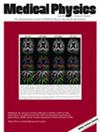A segmentation method for oral CBCT image based on Segment Anything Model and semi-supervised teacher-student model
Abstract
Background
Accurate segmentation of oral cone beam computed tomography (CBCT) images is essential for research and clinical diagnosis. However, irregular and blurred tooth boundaries in CBCT images complicate the labeling of oral tissues, and insufficient labeled samples further limit the generalization ability of segmentation models. The Segment Anything Model (SAM) demonstrates strong generalization and segmentation accuracy across diverse tasks as a vision foundation model. The Teacher-Student (TS) model has proven effective in semi-supervised learning approaches.
Purpose
To accurately segment various parts of oral CBCT, such as enamel, pulp, bone, blood vessels, air, etc., an improved segmentation method named SAM-TS is proposed, which combines SAM with the TS model. SAM-TS leverages Low-Rank Adaptation (LoRA) to fine-tune the SAM model on oral CBCT images with fewer parameters.
Methods
To efficiently utilize numerous unlabeled images for training models, the LoRA strategy is improved to fine-tune the SAM. The fine-tuned SAM and teacher models collaboratively generate pseudo-labels on unlabeled images, which are filtered and utilized to train the student model. Then, a data augmentation-based Mean Intersection over Union (MIoU) method is proposed to filter out unreliable or spurious pseudo-labels. Finally, the Exponential Moving Average (EMA) method is used to transfer the student model's parameters to the teacher model. After repeating this process, the final optimized student model for segmentation is obtained. The experimental results demonstrate that incorporating unlabeled data into model training through SAM-TS significantly enhances the model's generalization ability and segmentation accuracy.
Results
Compared to the baseline algorithm, the proposed method achieves an overall improvement of over 6.48% in MIoU. In the tooth segmentation task, the minimum MIoU and maximum MIoU increased by at least 10% and 27.32%, respectively. In the bone segmentation task, the minimum MIoU and maximum MIoU increased by 7.9% and 32.44%, respectively. Additionally, for overall segmentation, the Hausdorff distance (HD) decreased by 5.1 mm, and the Dice coefficient increased by 2.87%.
Conclusion
SAM-TS outperforms existing semi-supervised methods, offering a more competitive and efficient approach to CBCT image segmentation. This method addresses the data annotation bottleneck and opens new avenues for semi-supervised learning applications in medical imaging.

 求助内容:
求助内容: 应助结果提醒方式:
应助结果提醒方式:


